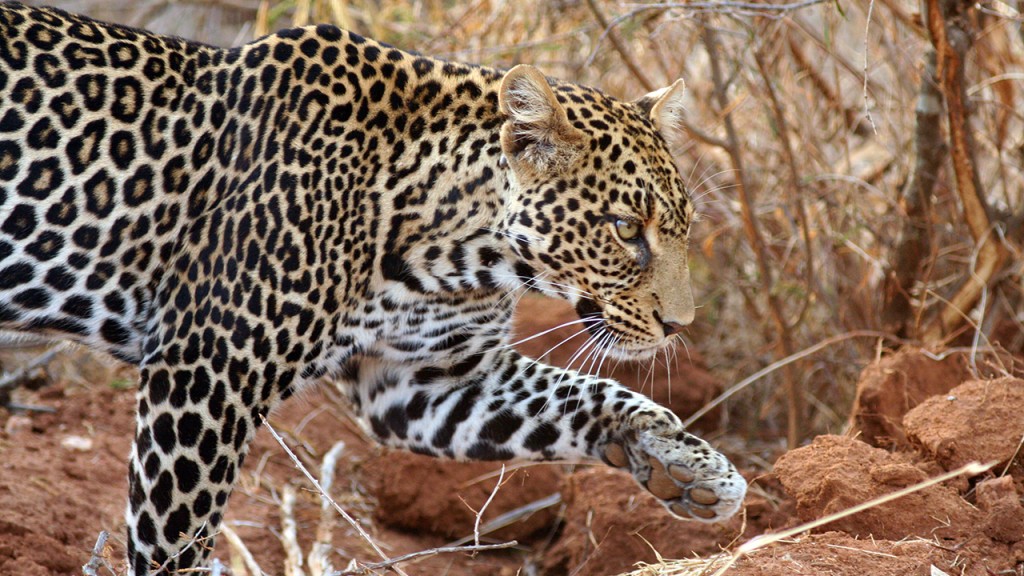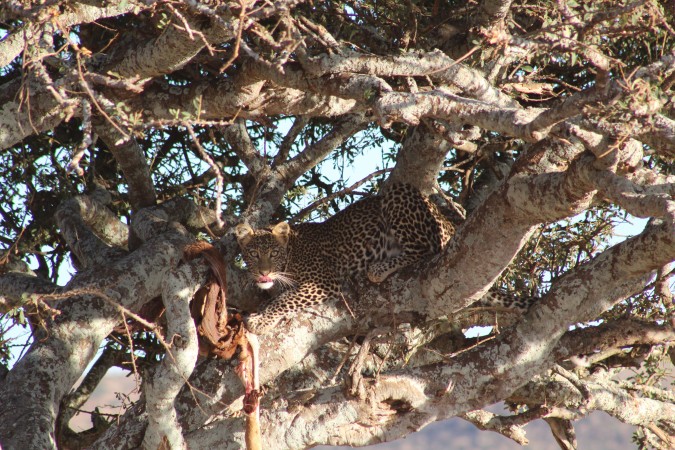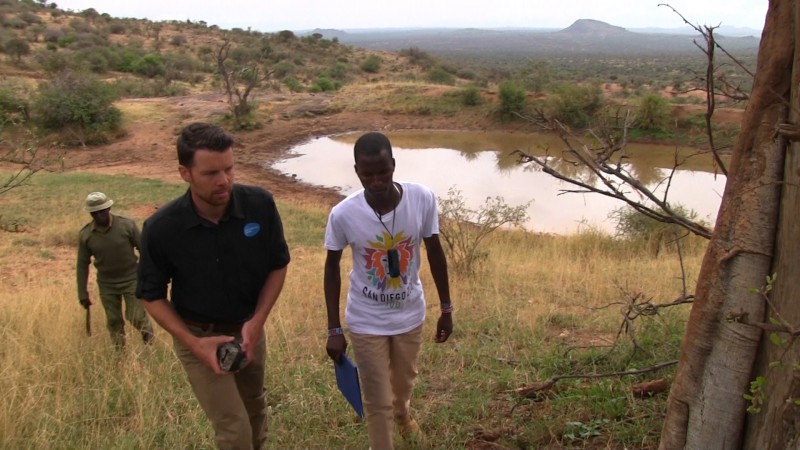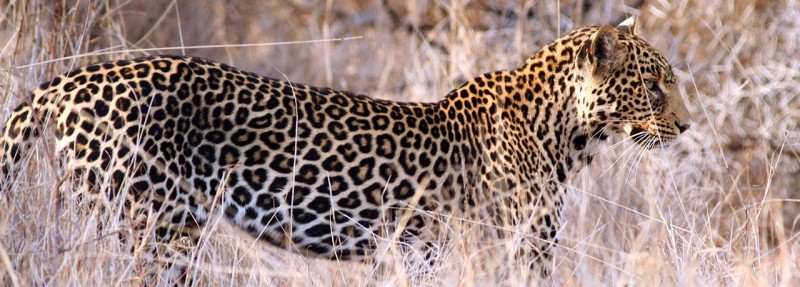Occasionally, a leopard will patrol the edges of Mpala’s hippo pool, the home of African wildlife on Explore.org. Their easily identifiable spots give the leopard top-notch camouflage abilities in the sun-dappled shadows of forests and the bush. With rosette spots for camouflage, stealth and agile movements, leopards are among the most successful of the African predators. Although leopard populations are extremely successful in protected areas, the International Union for Conservation of Nature (IUCN) classifies them as a near threatened species. With highly successful and ferocious hunting techniques, the elegant and strong big cat thrives in nearly all environments. These and other qualities have earned the leopard respect and awe among humans and wildlife alike.
At Mpala Research Centre and neighbouring Loisaba conservancy, a dynamic duo made up of researcher Dr Nicholas Pilfold from the Institute for Conservation Research at San Diego Zoo Global and his young talented assistant Ambrose Lotualai are on a mission to establish leopard population sustainability in the area. This follows a worrying trend in decreasing leopard numbers.
Leopards have long been hunted for their soft fur, used to make pricey coats and ceremonial robes as well as for their claws, whiskers, and tails, which are popular as fetishes with local tribes. With human settlements encroaching on wildlife areas, leopards may prey on livestock. Some pastoralists retaliate and kill leopards in retribution or attempt to exterminate leopards in a move to prevent livestock killings.
“Our mission here is to understand the dynamics of leopard populations and in turn, assess how this influences conflict with local communities,”
says Pilford.What the San Diego Zoo Global team hopes to unearth are the habits of a highly elusive predator. By setting up camera traps in strategic locations on both Mpala and Loisaba, the team will collect data that will help inform solutions to the human-leopard conflict in the area. Another facet of the project is outreach–both locals informing the researchers and researchers explaining the benefits of conservation. Ambrose is constantly in touch with the local communities informing and interviewing residents about conservation efforts and, hard as it may be for them, the need protect leopards. The Kenya Wildlife Conservation and Management Act (2013) stipulates that a genuine victim of human-wildlife conflict has a right to seek compensation.
A leopard lives a solitary life except during the mating season when the male and female live together. The gestation period is three months and a litter usually consists of up to three cubs. They prey on a variety of birds, reptiles and mammals including large rodents, rock hyrax, warthog, smaller antelopes and baboon, occasionally taking domestic animals such as goats, sheep, poultry and dogs.
Leopards tend to be most active at night, in the early morning, and in the late afternoon. Hunting is a solitary activity for these big cats. Even a female with older cubs will leave her young behind when she hunts. Territorial, the cats frequently patrol their home range, marking and remarking the borders.
While San Diego Zoo Global works on long-lasting solutions to human-wildlife conflict, viewers on Explore.org can hope for more sightings of the magnificent African leopard.
Peace,
Victor Kasii @mpalalive







